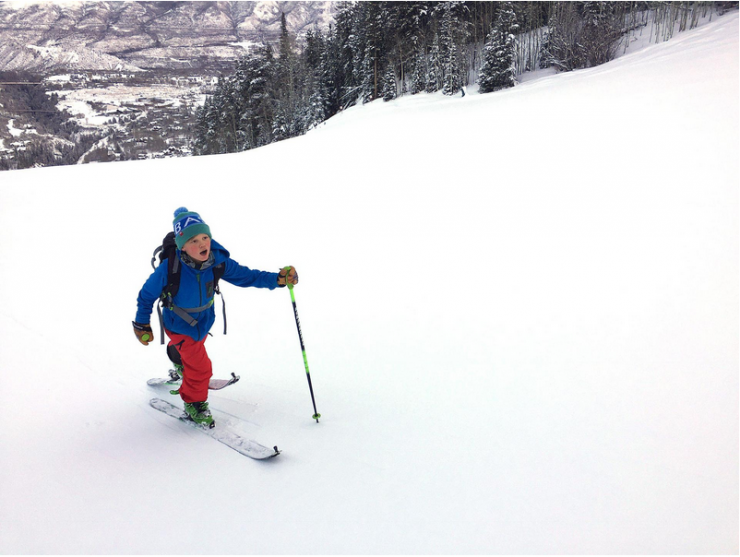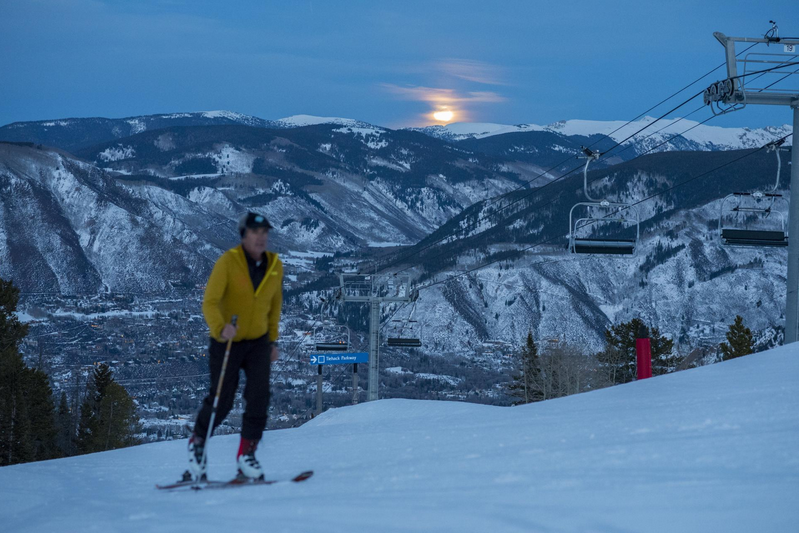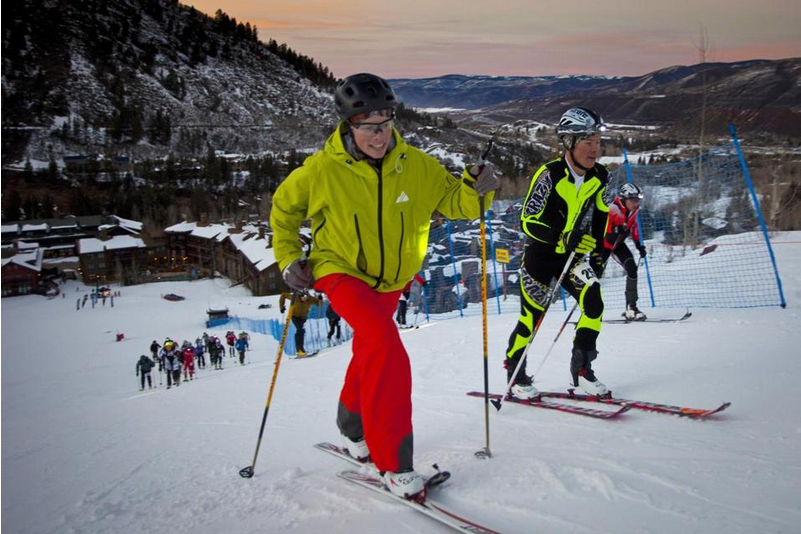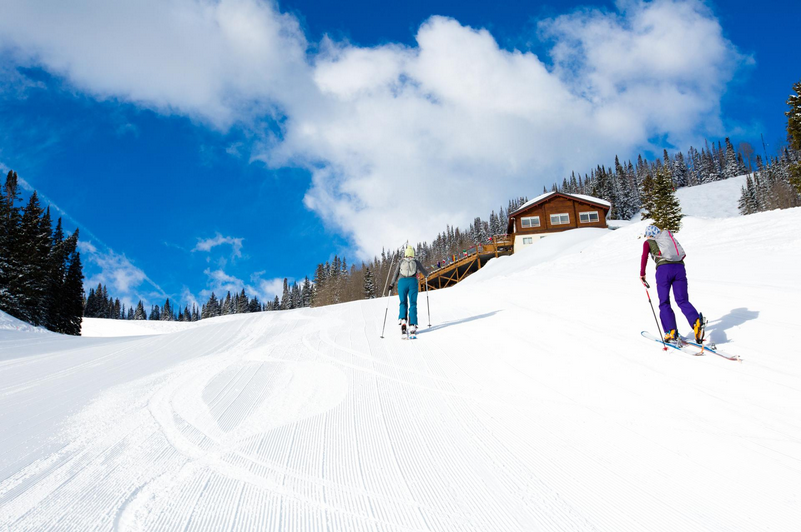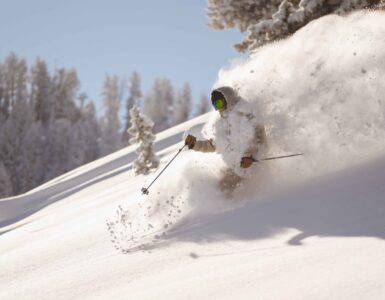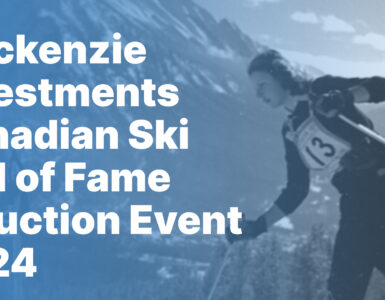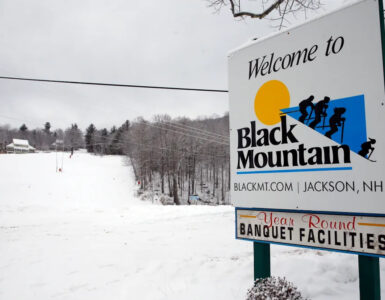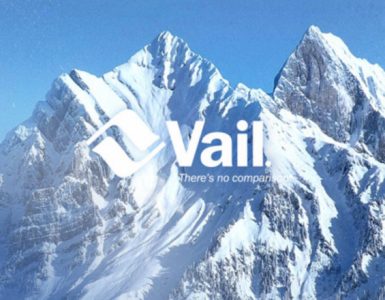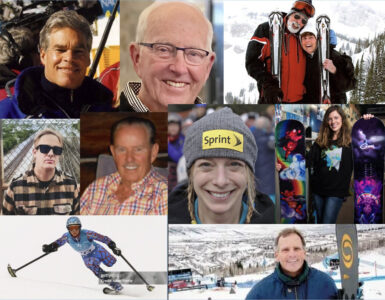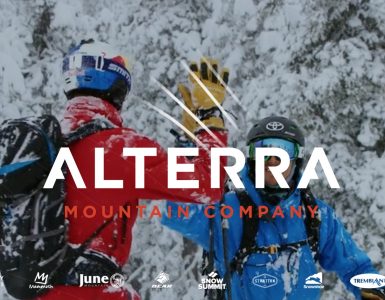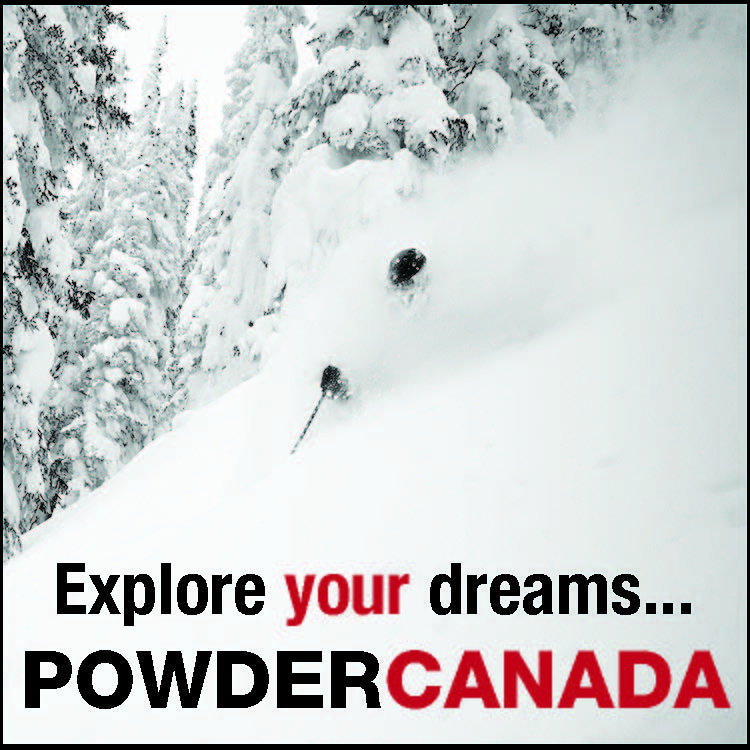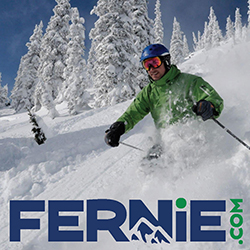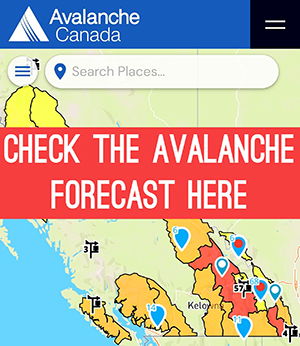Luke Bass first skied up a mountain at 10 years old, enjoying a bratwurst and a bonfire atop Crested Butte and then skiing back down with his dad. That same winter, he competed in a ski mountaineering race at Arapahoe Basin, wearing the smallest pair of women’s ski boots and alpine-touring skis that he could find.
“The only person I beat was my dad,” says Bass, but that didn’t diminish his love for uphill skiing. Three years later, the 13-year-old still skins up mountains to compete and for fun.
“When you’re skiing down, you’re not really looking at things along the sides of the trail, but when you’re skinning up, you have time to appreciate your surroundings,”says Bass. “During a race in Eldora, we were skinning up through the woods and it was sunny and quiet, and I was imagining I was deep in the wilderness. I just get into this zone where I feel really happy.”
Bass and his father, Sam, have joined one of the fastest-growing communities of winter sports enthusiasts in the United States: skiers and snowboarders who travel uphill at resorts nationwide. According to Chad Brackelsberg, a board member on the United States Ski Mountaineering Association, the number of uphill ski and snowboard participants and the number of uphill events have both increased about 20 percent per year over the past eight years.
At least 38 New England ski areas allow uphilling, also known as alpine touring or skinning, while California, Colorado, and Utah have become hotbeds for skinning up resorts out west. People can climb up mountains on skis or splitboards, both of which have free-heel bindings for easy walking and climbing skins on the bottom that let them hike up without slipping down.
Sign up for ‘It’s all downhill,’ the latest from the slopes of New England and beyond
“We’ve always had a skinning crowd here, but now with the advent of AT [alpine-touring] gear, uphill skiing has just exploded,” says Erik Friedman, a spokesman for Mad River Glen. “I got here at 7:30 in the morning last Monday [in December] and there were 30 cars in the lot. And I remember thinking, ‘We should open the bar.’ ”
People skin up mountains to experience the peacefulness of the outdoors, to tune into the landscape in a different way, or for fun, fitness, or competition (ski mountaineering has been recognized as an Olympic sport and may make its debut in the 2022 Winter Games).
“I don’t do it because I’m against chairlifts,” says Jordie Karlinski, a former professional snowboarder and Olympic competitor who now runswomen’s splitboarding clinics in Aspen. “I got into it five years ago purely for outdoor exercise. I love how you can get a great cardio workout on the way up and snowboard on the way down — it’s like hiking without having to walk down.”
Adds Todd Walton, director of communications and marketing for Snowsports Industries America, “Think of it like road running versus trail running. When you go uphill skiing at a resort, you can kind of turn off your brain and do it as a fitness activity, and you don’t have to worry about avalanche dangers and other backcountry issues.”
People like Jamie Anderson use it in preparation for backcountry trips.
“It’s nice to test out all the gear before you get out into the wilderness, especially if you bought anything new,” says Anderson, 34, who owns a house at Magic Mountain in Londonderry, Vt. “I also like to practice a few times before I go on a trip. You don’t want to get out there and realize that your drinking water has frozen, you’ve brought the wrong layers, and you’re out of shape. If something goes wrong in the backcountry, it’s much more dangerous.”
Another group of uphillers include those training for spring marathons or for the many ski mountaineering festivals and races across the country.
“There has been huge growth in the number of events in the Northeast from Quebec down through New England,” says Brackelsberg. “There are at least 20 races in the Northeast, and about 40 in the Midwest.”
Races range from a 500-foot ascent at Loon Mountain in New Hampshire to a 6,000-foot route at Brighton Ski Resort in Utah during the three-day Wasatch Powder Keg, one of the biggest and oldest ski mountaineer races in the United States, which draws about 300 participants.
“We’re still about 10 years behind Europe in the development of the sport,” says Brackelsberg. “Races in Europe can have 1,000 participants and a couple of thousand spectators.”
In New England, the Green Mountain Skimo Citizen Race Series includes regular races at Bolton Valley, Sugarbush Resort, and Stowe Mountain Resort, the NE Rando Race Series hostsraces at Sunday River, Crotched Mountain, Bromley, and Berkshire East, and the SkimoEast race series holds races in Vermont (Jay Peak and Burke), and Quebec. Winter Wild also runs races with a different twist: Participants ski, showshoe, or run in shoes with snow spikes to the top of the course, and then descend the mountain to the finish line.
Not all uphill events involve racing. Aspen and Crested Butte offer full moon dinners or parties, when people skinup the resorts by moonlight and dine at mountaintop restaurants.
More ski shops than ever sell and rent alpine-touring equipment, but where can you use that gear? Policies at resorts vary enormously, and are influenced by land-use permits, liability issues (all impacted by whether a resort sits on public or private land), the type of terrain, and tradition — certain ski areas are simply resistant to change.
Some ski areas only allow it outside of the resort’s operating hours, while others only allow it when chairlifts are running, and on certain designated routes. Some flat-out forbid uphill travel. And then places such as Magic Mountain, Mad River Glen, and Crested Butte fully embrace it.
“We see value in offering as many activities and experiences for our guests as we can, including downhill skiing/riding, skinning, cross-country skiing, fat biking, ice skating, and so on,” says Ethan Mueller with Triple Peaks Resorts, which owns Crested Butte, Okemo, and Mt. Sunapee. “Although many of these don’t really make much money, they do add to our guests’ experiences, which is what we’re all about.”
Adds Geoff Hathaway, owner of Magic Mountain, “Magic has always been a mecca for uphill travel in New England, but the numbers have doubled in the past five years. We have a boundary-to-boundary kind of policy and lots of tree skiing, which kind of ignites that rugged individual who gravitates toward that type of terrain. Uphill travel is allowed at any time — there’s no fee, and no ticket — but they’re responsible for themselves.”
At Magic, those who skin up the mountain receive a token for a free lift ride.
“That’s a reward for getting out there and getting your exercise,” says Hathaway. “We have a little fun with it.”
Steamboat Springs gives uphill skiers a reflective armband after they sign a waiver, which indicates that they agree to abide by the skier code of responsibility. The armband also makes it easier for groomers and other skiers to spot them.
Before you skin up at a resort, check the ski area’s uphill travel policy (go to the USSMA’s website at www.ussma.org, which links to the policy on most resort’s websites). Or stop by the customer service desk to find out if it’s allowed, where uphillers can go, and if there is a cost. Prices vary as widely as the uphill policies, from free to more than $20a day.
“We charge a fee for this because it helps pay for ski patrol, so if someone has a problem, we can rescue them,” says Ben Hall, marketing manager at Ragged Mountain, which charges a $10 daily fee to skin up the designated route.
Not all mountains will come to your rescue, so make sure you have all the right gear, and know how to use it. That way, you can tune into your surroundings, enjoy the peacefulness of the setting and, like Luke Bass, get into the zone.
By Kari Bodnarchuk
Source: Boston Globe


